Business
8 Best Social Media Platforms for eCommerce Businesses
Published
2 years agoon
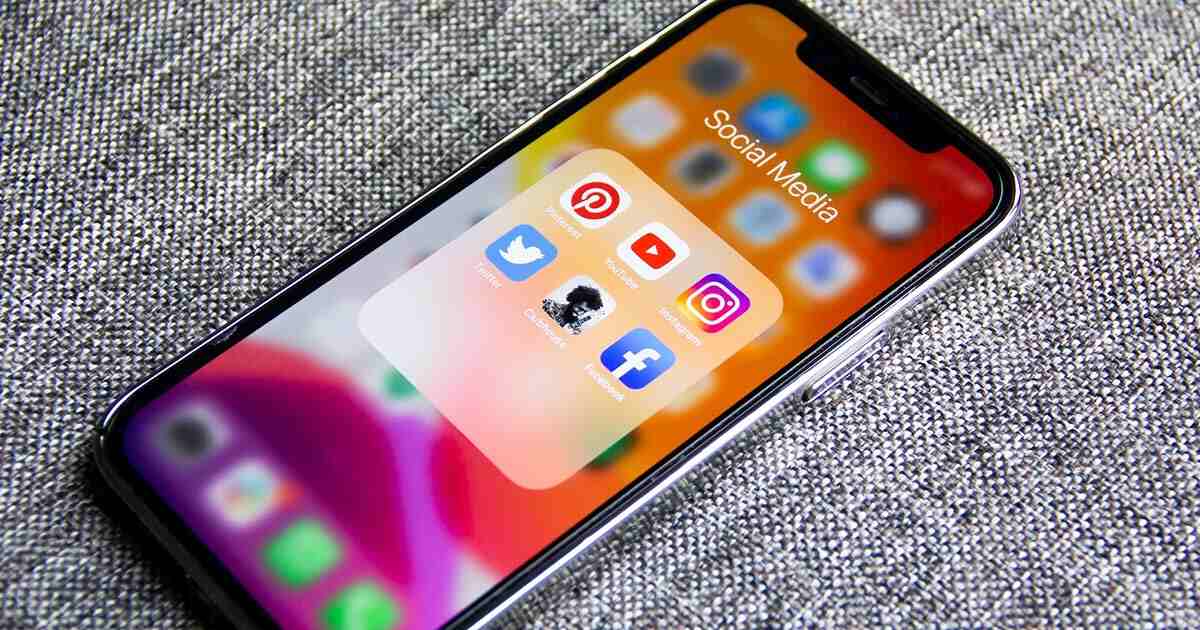
Today, big and small companies sell their products on social media platforms. Studies show that in 2023, 4.89 billion people will use social media. This figure is predicted to increase to 5.86 billion people by 2027. Check out the eight best social media platforms for ecommerce today.
1. Facebook

Facebook is the biggest social media networking site, with a whopping 2.8 monthly active users (MAUs). Its robust advertising platform allows ecommerce businesses to target specific audiences. Facebook also offers a variety of features like Facebook Marketplace and Facebook Shops, which let companies sell products directly on the platform. In addition, you have Facebook Messenger Chatbots and Facebook Ads.
All brands should create a Facebook business page to help promote their brand and increase sales. Whatever your niche is, there’s a higher chance you’ll find your target customers on Facebook. You can also establish your own Facebook store on the Facebook business pages. But, based on Facebook rules, you can’t sell services or digital or downloadable products from your Facebook shop.
2. Instagram
Instagram has more than 1 billion MAUs worldwide. The platform is particularly popular with younger demographics. Instagram is incredibly image and video intensive. Instagram offers several features, such as shoppable posts like Instagram Stories, Instagram Shopping, Instagram Live, IGTV, and Instagram ads.
3. Pinterest
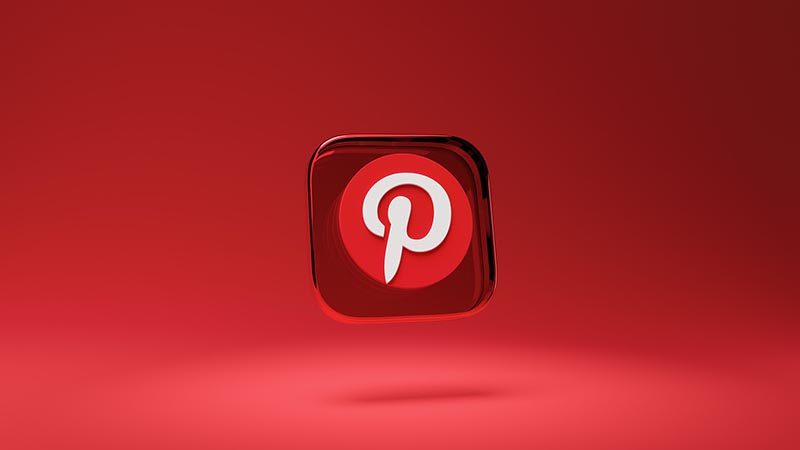
Pinterest is a visual search engine that enables people to discover and save ideas and inspiration. Pinterest has well over 250 million monthly active users. This social media platform is the perfect place to start your sales funnel. You can build awareness around your brand and products through Pinterest pins. Likewise, the site helps develop consumer interest and increase traffic. You can also use Pinterest to boost in-store and online sales and influence users to sign up, buy, and install products.
4. Snapchat
Snapchat is considered the future of social media shopping. Snapchat boasts a fantastic 287 million active users a month. Many brands use Snapchat to connect to their audience – especially the younger generation.
Snap ads are interactive video ads. The best thing about Snap ads is that they boast a swipe-up rate that’s 5x higher than other comparable social medial networks. These could cost brands between $1,000 to $3,000 monthly to run.
Snapchat is also a popular platform for influencers. Ecommerce businesses can partner with influencers to promote their products. Conversely, influencers can create sponsored snaps showcasing the product and encouraging their followers to visit the website to purchase.
5. Twitter
Recent data shows that Twitter has over 350 million monthly active users, a famous microblogging platform. It’s also a great app for building customer relationships, growing your online following, advertising products and services, and conducting market research.
The Promoted Twitter Accounts, Promoted Tweets, and Twitter’s Promoted Trend can help improve your reach by promoting your account to users not yet following you.
6. YouTube
YouTube is the second-largest search engine, with an average of over two billion monthly active users. It is an effective platform for ecommerce businesses that sell products that require demonstration or explanation. Companies can create product review videos, tutorials, and other content that showcases their products.
The world’s largest brands, such as Coca-Cola, American Express, and LEGO, regularly post content on a dedicated channel. Google says that 70 percent of people have purchased from a brand after seeing it on YouTube. But patience is a virtue. Building your audience before you reap the rewards on YouTube would be the best bet. You may read the 6-step guide on YouTube marketing to learn more.
7. LinkedIn
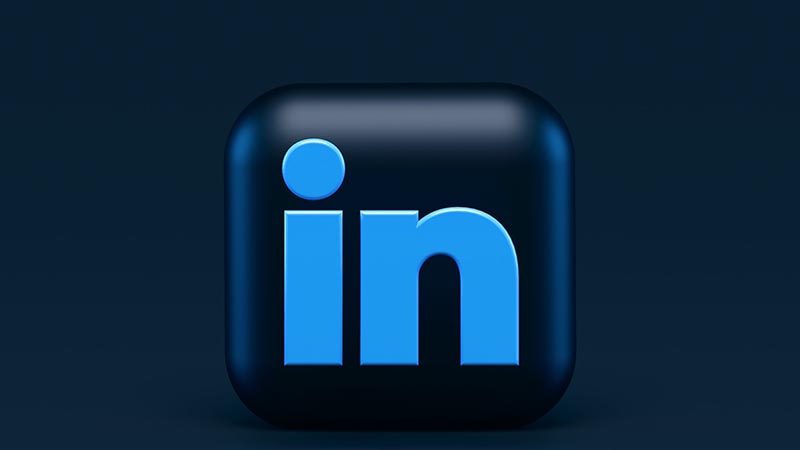
Statistically speaking, LinkedIn boasts 303 million monthly active users. It is an ideal place for entrepreneurs looking to make a name in the business-to-business market. You can launch three kinds of ads on LinkedIn: Sponsored Content, Sponsored InMail, and Text Ads.
LinkedIn’s ad targeting isn’t as sophisticated as Facebook’s. However, you can still reach your ideal audience by setting filters, including company, company size, job title, location, seniority, age, education, and expertise.
By creating a solid presence on LinkedIn, ecommerce businesses can establish themselves as industry leaders and increase revenue.
8. TikTok
A relatively new player in social media, TikTok lets brands upload and share videos up to three minutes long. It has over 1 billion monthly active users in over 150 countries worldwide. TikTok has become universally popular in recent years. The platform’s highly engaged users make it an effective social media platform for ecommerce marketing.
In 2020, TikTok introduced TikTok for Business, which lets business owners connect their online store and TikTok account. You can engage new and existing customers on TikTok by using hashtags, collaborating with influencers, and running four different types of ads, including Dynamic Showcase Ads, Collection Ads, Spark Ads, and Lead Generation Ads.
Critical Techniques on Using Social Media Platforms for eCommerce
There are several essential techniques that ecommerce businesses can use to leverage social media platforms for ecommerce effectively. Below are some of the most important strategies:
- Define your target audience.
- Create engaging content.
- Use social proof, such as customer reviews and user-generated content.
- Leverage influencer marketing.
- Use paid advertising
- Utilize the platform’s shoppable features.
- Monitor analytics and track performance.
Conclusion
Almost every company selling a product or service has a site that allows people to purchase directly. You need more than a website to help customers discover your product. That’s where social media platforms play a crucial role in the success of ecommerce businesses. The best social media platforms for ecommerce depend on the sector or niche and its target audience but generally include Facebook, Instagram, Pinterest, and LinkedIn.
You may like
Business
7 Effective Ways to Improve at Networking and Grow Your Brand
Published
1 day agoon
August 19, 2025
Believe it or not, networking works. If you want to grow your business, you need to connect with people and apply networking tips – whether in face-to-face meetings, hybrid events, or online meetings. And when you want networking to work for you, you must be pushy and assertive but polite.
Read here to know the ways to improve at networking:
1. Identify Your Goals

The first thing you need to do is to determine what you want to get out of the task. Ask yourself, what am I looking for? Once you understand your goals and objectives, it’s easier to identify which events to go to. This way, you can find which ones are better aligned with your business to get more productive results. This will also assure you that your efforts won’t go to waste.
2. Research the Events
Once you determine your goals and line up a few events to go to, do a bit of research. Try to get as much data about them as possible. It is also highly recommended that you get to know the people attending these events. If you see a company you’re interested in, you should find out more about it before going.
In 2025, research isn’t limited to physical events. Many networking opportunities now happen online or in hybrid formats. Before joining, check if the event has a digital platform or app where you can view the agenda, profiles of attendees, and discussion threads. Preparing your LinkedIn profile or digital business card in advance will make it easier to connect with others, even virtually. Taking the time to engage in pre-event online conversations or forums can also help you stand out and build rapport before you meet people in person.
3. Wear the Appropriate Clothing

They say, “dress to impress,” and this rings true when attending networking events. Choose clothes that will make you feel comfortable while suitably dressed for the occasion. You can wear bright-colored clothes for a casual event and be the ice-breaker. Or add an accessory that can be a conversation starter. This way, socializing becomes more effortless and you will get more people to network with.
One of the ways to improve at networking in terms of fashion is to focus not just on formality, but on authenticity and sustainability. Many professionals now prefer smart-casual looks that reflect their personal brand while also considering eco-friendly or minimalist fashion choices.
For hybrid or online events, remember that your on-screen presence matters too: choose solid colors that look good on camera, avoid overly busy patterns, and ensure good lighting. Dressing in a way that aligns with your values and professional identity will make you more memorable in both physical and virtual spaces.
4. Practice Makes Perfect
It pays to rehearse what you’ll say to people about your company. You can stand in front of a mirror and practice your pitch so you won’t have to forget an important detail. Remember to include your achievements to make them see how your business will help them improve theirs. A little bit of humble brag will go a long way.
5. Create a Killer Business Card

There will be exchanges of business cards at these events, so make sure that yours will stand out. There are many websites you can go to where you can design your own. Ensure that all pertinent data is on it, so people aren’t left hanging. In addition, make sure that your design will grab attention and won’t have the card end up in the trash bin.
These days, business cards aren’t just physical, but digital too. Many professionals now use QR codes, NFC-enabled cards, or LinkedIn QR sharing to exchange details instantly. Having a sleek digital business card or profile ready ensures you’re remembered even after the event ends. For in-person events, a thoughtfully designed physical card still makes an impression, but pairing it with a scannable digital version gives your contacts more ways to connect. This hybrid approach prevents your information from being lost and makes follow-ups easier.
6. Be Prepared
Also included in the best ways to improve at networking is to set yourself at ease and relax, especially if it’s going to be a long event. Get your socializing skills warmed up by getting a drink, if applicable. This can also set the mood for the event to help you start talking to people. Once you get the conversation going, you should engage in active listening.
As much as you want people to absorb what you’re saying, you should do the same. Allot a time for each person you talk to and stick to that time. Then, excuse yourself politely to start conversing with other people. Hand over your business card and move on to the next prospect.
Don’t worry about offending people; many networking event attendees understand the transactional nature of them. Give them a promise to follow up and end the conversation.
7. Follow the Best Practices
After you go to one event, analyze your moves and try to make a pattern of what worked. This can help you avoid mistakes such as wasting your time with one company and other similar situations. Also, think of the best lines that will quickly convey your message. Think of networking as speed dating, so arm yourself with the best pickup lines.
In 2025, best practices go beyond clever one-liners. Many networking platforms now use AI-powered apps that track who you’ve met, remind you to follow up, and even suggest conversation starters. After events—whether in-person or virtual—take time to review not just who you spoke with but also how you engaged online, such as LinkedIn comments, virtual chatrooms, or community follow-ups.
One of the most important ways to improve at networking is to focus on building authentic, long-term connections rather than just rapid-fire introductions. Documenting key insights digitally will help you refine your approach for the next event and create a more intentional networking strategy.
Business
Fiverr vs Penji vs Canva: Who Comes Out on Top for Creatives?
Published
6 days agoon
August 15, 2025By
Skylar Lee
Fiverr vs Canva vs Penji – which one should you choose?
Strong graphic design is no longer optional—it’s essential for standing out in today’s competitive market. Skimping on design could mean losing ground to competitors who are investing in high-quality visuals.
The good news? Accessing professional design has never been easier. From hiring skilled freelancers to creating your own designs or using subscription-based services, the options are vast. In this post, we’ll compare Fiverr vs Penji vs Canva, highlighting the leading choice in each category so you can find the best fit for your brand’s needs.
Companies Overview
Let’s start our Fiverr vs Canva vs Penji review with a brief introduction to each company.
Fiverr
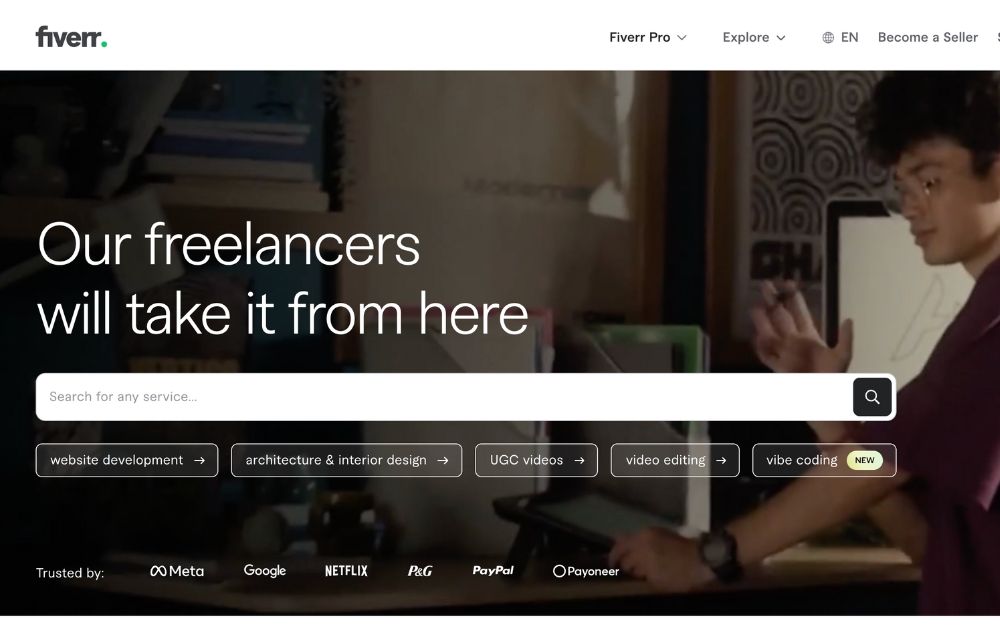
Fiverr is a freelance gig platform for hiring remote workers, like web developers, podcast editors, video editors, and many more. Graphic designers are also available to hire on Fiverr with a wide scope of services. On Fiverr, you can browse various design styles to find the right designer for your project.
Penji
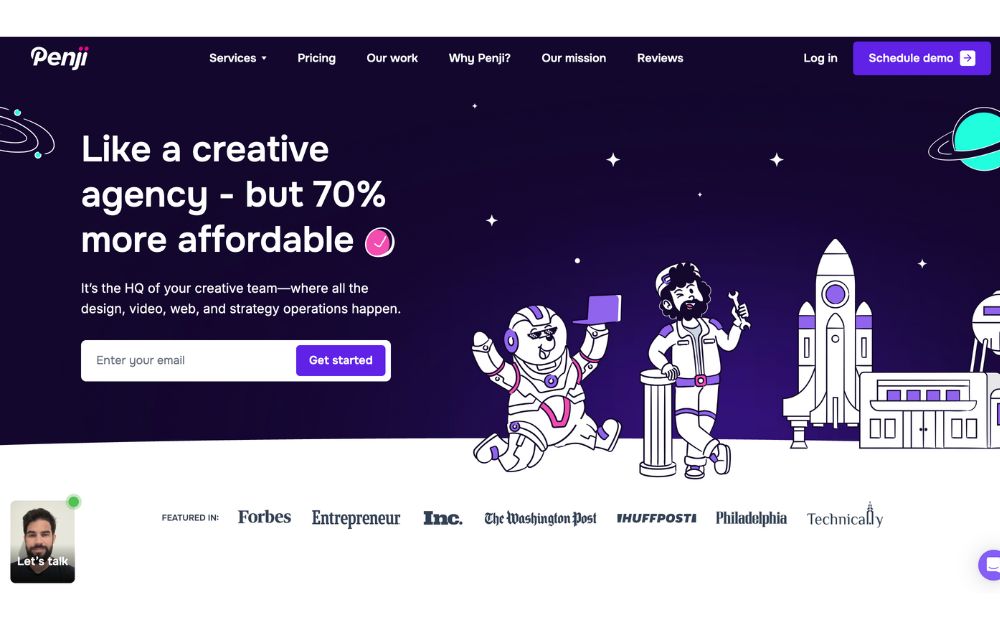
One of the highest-rated design services, Penji is a subscription-based graphic design service. You can subscribe and request as many designs projects as you want on a rolling basis. With Penji, you get access to 120+ design types, including web and app designs, presentation designs, motion designs, and illustrations. Plus access to art directors or project managers depending on what tier you choose.
Canva
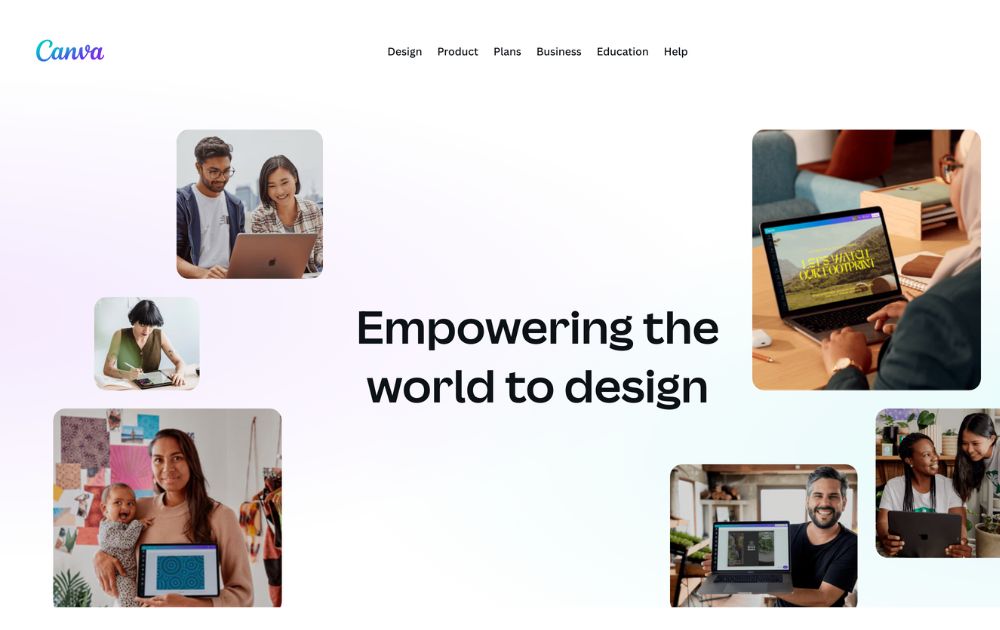
Canva is a do-it-yourself graphic design application that will help you design anything related to your business. You don’t need graphic design experience to use Canva. They offer templates to help you get started with designs like YouTube thumbnails or ads. Plus, you can edit those templates based on your unique branding.
Fiverr vs Canva vs Penji Features
Next in our Fiverr vs Canva vs Penji showdown, let’s check out the features of each to see which one reigns supreme.
Fiverr

Fiverr provides businesses with two ways to find freelancers. First, you can find them using the search bar. Type “graphic designer” and find available designers to collaborate with. You can narrow your search by finding designers based on your design needs. For instance, you can browse “logo designers” instead of graphic designers.
As you select graphic designers, you can see that designers offer various plans depending on your design project. Plus, they indicate the following:
- Number of designs they can create
- Number of revisions
- Turnaround time
Plus, you can also find reviews from previous clients to know their working experience with one of your top choices.
The other way to find freelancers is the Fiverr Enterprise platform. Fiverr specialists will help you find the best graphic designers, creatives, and other employees for your team. Plus, the platform includes onboarding, management, payment, and compliance.
Penji
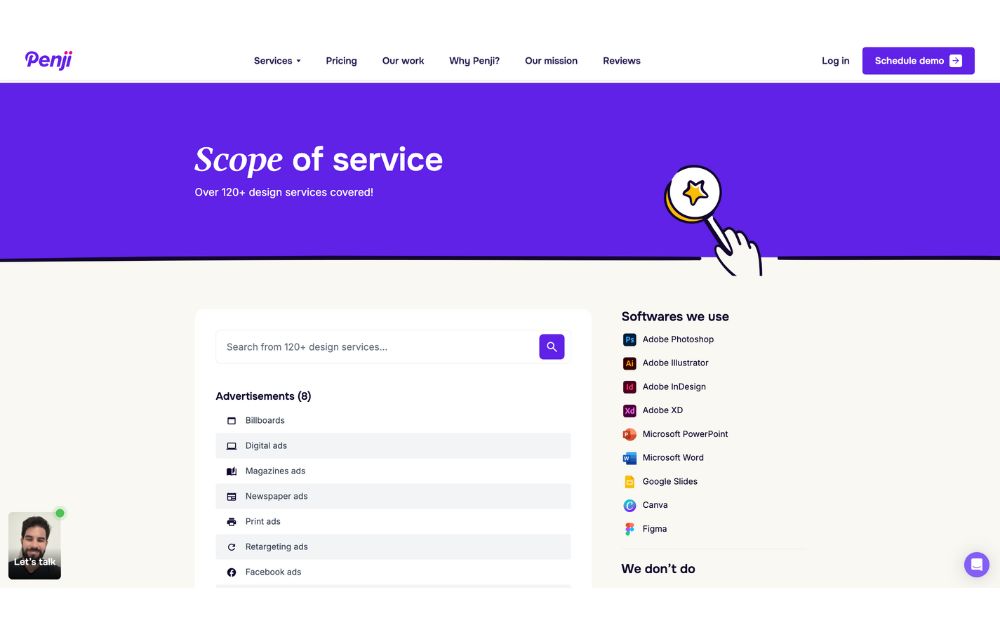
Penji has many features to get you started, from submitting your first request to chatting directly with your designers. You simply click “Create” in the top right corner of the dashboard, submit your design brief, and get matched with the appropriate designer right away.
Here’s what to expect when subscribed to Penji:
- Request 120+ designs
- Get matched with the best designer for your project
- Swap designers if needed
- Manage multiple brands
- Point and click revisions
- Team collaboration
- Designer chat window
- Real-time updates
Canva
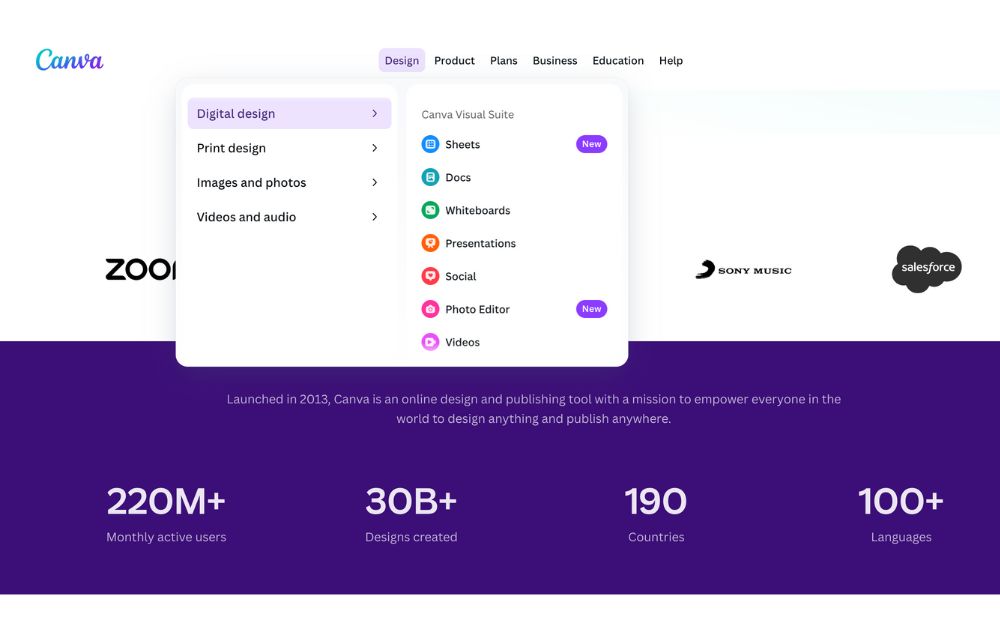
Meanwhile, Canva is a software loaded with many intuitive features to help you design your own projects. Features depend on the plan you choose. However, here are the basics:
- Drag-and-drop editor
- Access to 1 million templates, 3 million photos and videos, and thousands of design types
- AI-generated designs
- Printing and delivery
However, if you need more than that, you can access the following on the paid plans:
- Resize and translate designs
- Brand kits
- Remove backgrounds
- 1TB of cloud storage
- 24/7 customer support
Turnaround Time
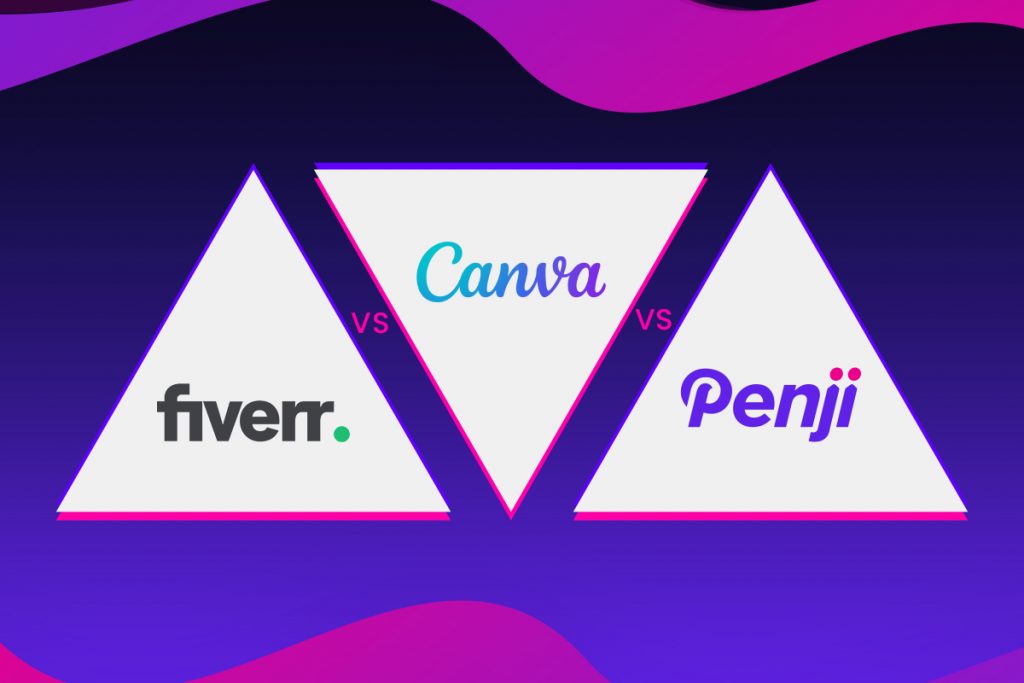
Turnaround time for Fiverr freelancers depends heavily on the graphic designer. They will indicate how long the delivery date would be. Some designers are quick (1-2 days), while others will take weeks for more involved projects.
Penji guarantees a 1 to 2-day turnaround time on most designs. If you’re subscribed to the Agency plan, they can even ensure same-day turnaround. However, complex projects like web or app designs will take longer.
Of course, if you’re using Canva, turnaround time is simply however long the project takes you! Again, this can vary depending on your design skills and whether or not you find the design elements you’re looking for.
Fiverr vs Canva vs Penji Pricing
Fiverr pricing depends on what designs you need. But as the name suggests, Fiverr refers to the $5 starting point that freelancers can charge clients with when working with them. However, there’s always the risk of poor quality. It’s best to vet each designer carefully and choose something reasonably priced.
Penji’s pricing is simple because you pay a flat monthly rate for all design work. Here are the pricing options depending on what tier of service you choose:
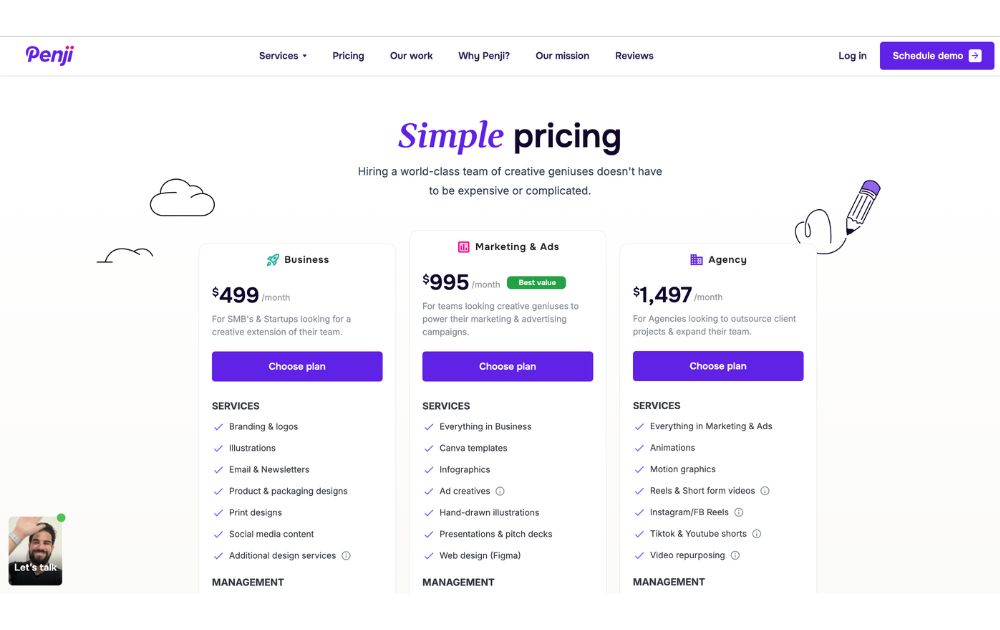
Lastly, Canva has three pricing tiers, depending on your needs and budget.
- Canva – Free
- Canva Pro – $15/mo
- Canva for Teams – $10/mo (minimum 3 users)
Design Work and Production
Next, let’s see Fiverr vs Canva vs Penji in terms of design work and production.
Design work by Fiverr freelancers varies from experience level to design specialties. Many Fiverr freelancers produce decent work for clients, considering the rates they charge. However, not all design work from Fiverr is 100% the best. Considering Fiverr is the best for short-term work, expect one or a few design variations for a project.
For Canva, we can use templates as the point of comparison for design work. Thousands of creators submit their templates to the graphic design software. Many templates look the same because it is the trend or looks modern. Regardless, Canva templates look decent to use as the base design for your brand. However, you need to modify it to your brand to avoid using similar templates from competitors or other brands.
Finally, Penji produces highly custom designs for clients. Because the price point is a bit higher, their design team can take the time to ensure you get the exact version of what you’re looking for. Penji isn’t a freelance platform, so you may get the chance to work with the same designers again and again (especially if you prefer their work).
Competitor Analysis
One fair comparison to make is between Fiverr and Penji since both deal with actual designers and their work. Here are a couple of comparison points for these two services to help you narrow your options further.
- Design variations – Fiverr freelancers can create a few variations. Meanwhile, Penji designers can produce multiple variations since you can switch between designers.
- Work volume – Fiverr designers can produce a limited number of designs, depending on plan inclusions. Ideally, they’re a good option for one-off projects. However, Penji can produce more than 10+ designs, especially if you have a monthly volume of designs.
- Comfort – Penji allows you to sit back and run your company since it’s an extension of your team. Meanwhile, you need to browse and interview freelancers on Fiverr. Plus, you have to worry about payment and management.
But if we were to put Canva back into the equation, Canva has the upper hand in pricing. Plus, if you’re creative enough, you can produce great brand designs without the help of designers.
Final Thoughts
Graphic design work can be done and delivered in three main ways: doing it yourself, hiring a freelancer, or subscribing to a graphic design service.
As we’ve seen in this three-way Fiverr vs Canva vs Penji showdown, each has its strengths and weaknesses. The three services have different models, which could benefit users or subscribers in getting their designs. It’s up to you which is the best design service for your situation. Good luck!
Business
5 Highest Rated Design Services Used by Big Brands & Agencies
Published
6 days agoon
August 15, 2025By
Skylar Lee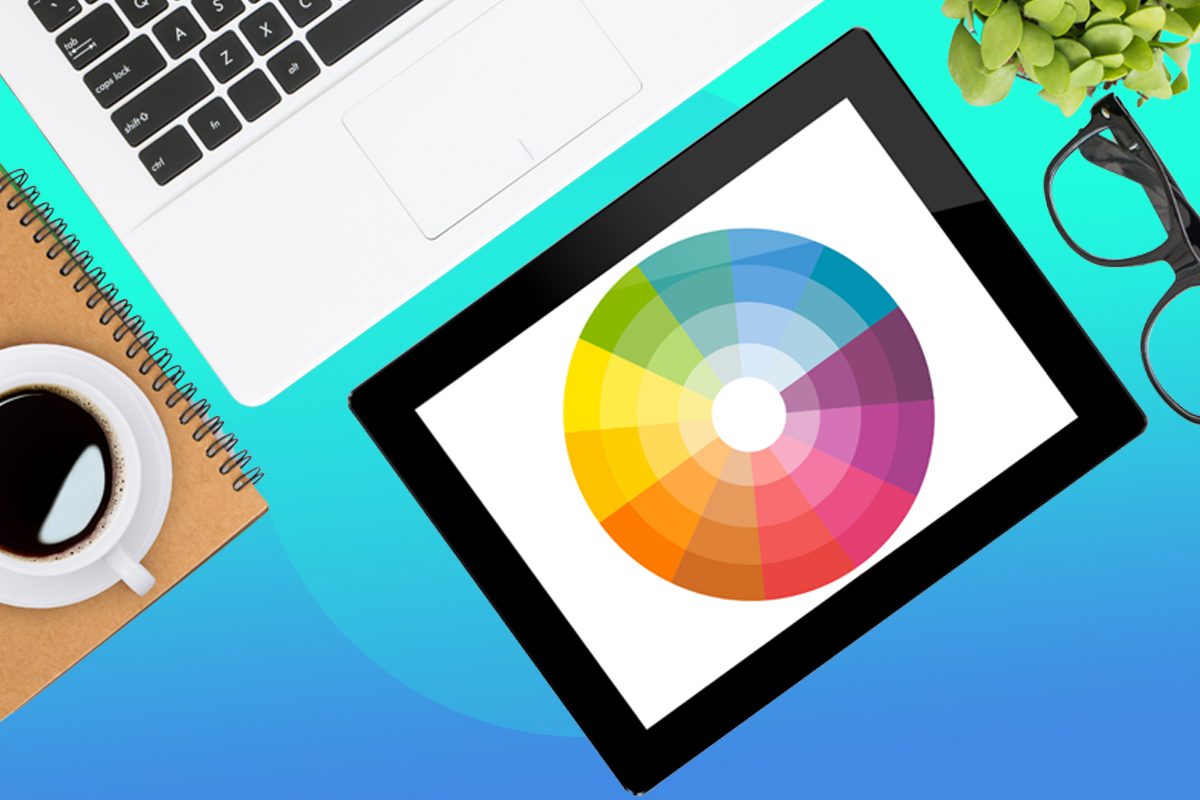
Finding a design partner that can elevate your brand’s visuals, strengthen your identity, and support your revenue growth is more important than ever. The challenge? Comparing design companies can feel like a full-time job. To save you time, we’ve rounded up the highest-rated design companies based on reviews from Trustpilot and Google—two trusted platforms where real clients share their experiences.
Let’s explore the highest-rated graphic design companies of the year and see what they offer so you can choose the perfect fit for your brand and budget.
1. Penji
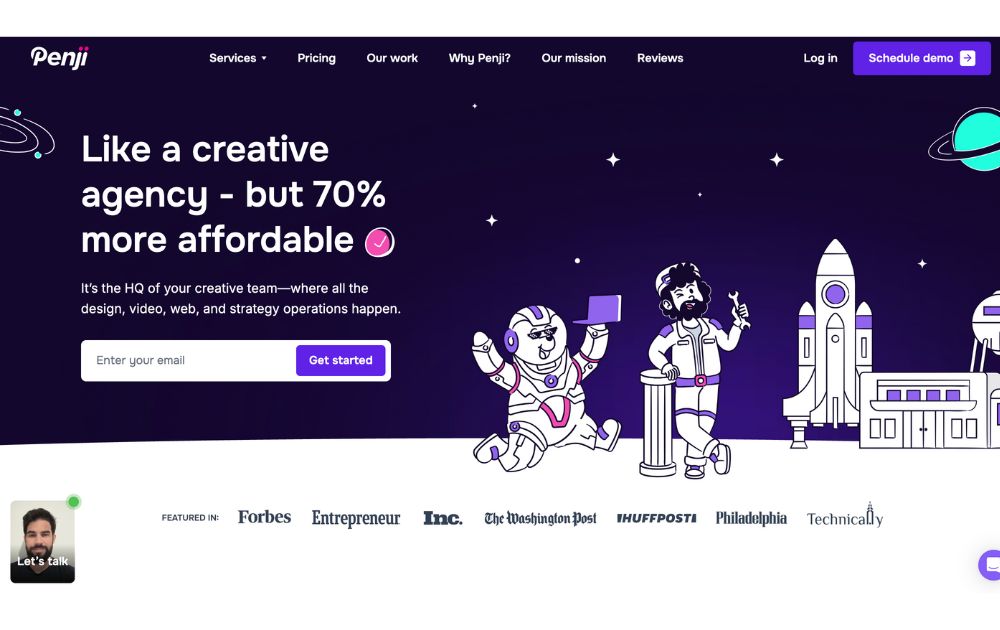
Trustpilot rating: 4.8
Google rating: 4.7
First on our list of highest rated design services is Penji. The platform’s business model is unique because it offers an unlimited graphic design subscription. You simply pay a flat monthly fee and get as many designs as you need for yourself or your clients. Their scope of service spans over 100 design categories, which means they can handle your website, branding materials, ad designs, packaging designs, and more. Agencies rely on Penji to help them manage various client projects and radically increase their design output if needed.
Penji has three plans to choose from, all of which are unlimited, but the details vary. In higher plans, you can access motion graphics and even work with an Art Director and a Figma Web Designer. The platform is user-friendly, making it easy to submit design briefs, collaborate with your team, and contact your assigned designer directly.
Unlike some of the companies on this list, Penji has a dedicated design team. So if you don’t want to take a chance on freelancers, you can get to know Penji’s designers and who works best with you. Intrigued about Penji? Learn more from our review here.
What can you get from an unlimited graphic design service?
- Logos
- Business cards
- Web and app designs
- Presentation designs
- Marketing materials
- Marketing designs
- Digital ads
- Billboards
- Magazines
- Packaging
- Merchandise
- Illustrations
- Motion graphics
Pricing:
- Starter – $499/mo
- Marketer – $995/mo
- Agency – $1497/mo
2. Clay

Google rating: 4.8
Also included in our highest-rated design services is Clay, a widely known and respected design agency that has worked with such names as Slack, Stripe, and Meta. They’re a full-service agency that specializes in branding, website design, and content creation. This is a diverse company that honed its creativity with past projects like a food app, a payroll management platform, an interior design website, and more.
Clay has a knack for covering all the details and ensuring they go all out for each project. Pricing is handled on a case-by-case basis as the company operates like a traditional full-service design agency. They’re a great option for brands with larger budgets who have specific projects they want to accomplish – eg, rebrands, app builds. They also offer art direction and classic graphic design services like illustration and animation.
3. Toptal

Trustpilot rating: 4.5
If you want to hire a freelancer, but you’ve been disappointed in the past, you might be hesitant to try again. Fortunately, Toptal has taken a different approach from platforms like Fiverr and Upwork. They offer a more upscale experience of freelance matching with highly experienced professionals (sometimes with impressive backgrounds like being a former Google employee). Many companies lean on Toptal for reliable freelancers, including Zendesk and DoorDash.
With Toptal, you can hire a freelancer part-time or full-time. You’ll simply answer a few questions about your business on their website. If you don’t like the work of the first designer you’re matched with in the early phase, Toptal will start the matching process over again so they can find you a better match.
Another benefit of Toptal is that they have professionals in various design niches. They offer UX and UI designers, product designers, game designers, creative directors, and more.
4. Webdew
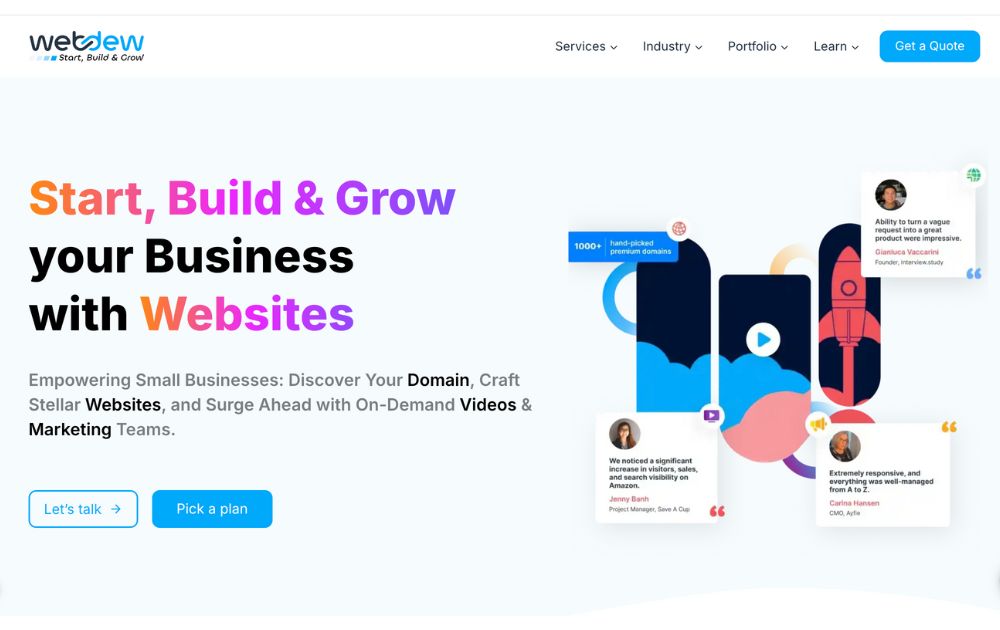
Trustpilot rating: 4.7
Webdew is a lesser-known company, but their review rating speaks for itself. Their skilled developers have a UI/UX focus and will take you through the entire design process from wireframe design to backend development. They also handle things like website migration and WordPress development.
Webdew is anything but a one-trick pony. They offer web design, video production, marketing, and Hubspot-related services. But if you’re looking for other graphic design services like logo design or illustration, you’ll have to look elsewhere.
5. DesignCrowd
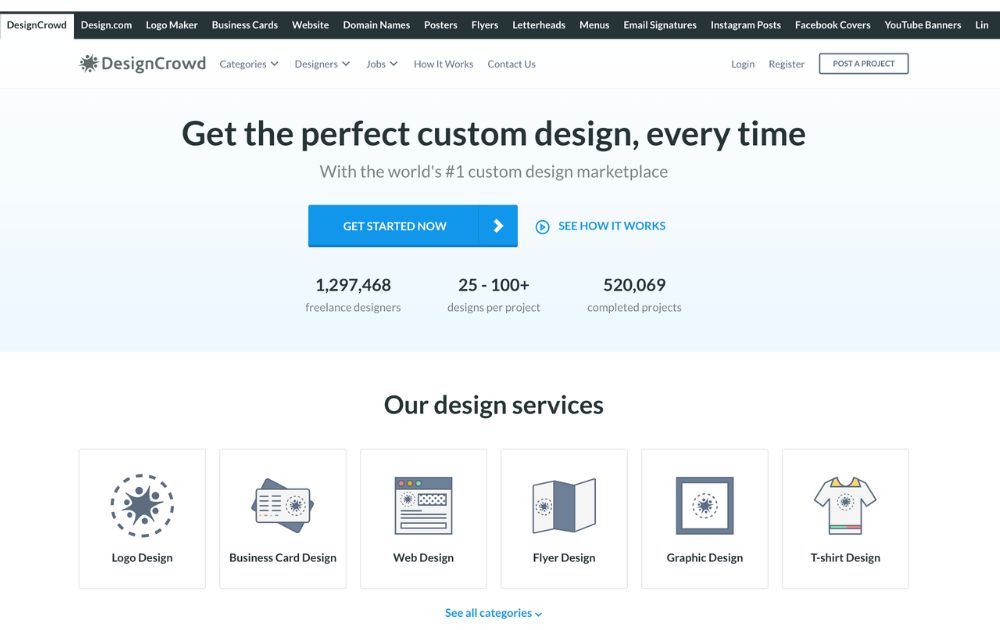
Trustpilot rating: 4.6
DesignCrowd is an innovative platform that connects businesses with freelance designers from around the world. By leveraging the power of crowdsourcing, DesignCrowd allows clients to post design projects and receive a wide variety of submissions from designers. This approach not only provides clients with creative options but also allows designers to compete on a global stage, showcasing their skills and gaining new opportunities. The platform covers many design mediums like logos, websites, and t-shirts, making it a versatile solution for enterprises of any size.
DesignCrowd’s process is straightforward and user-friendly. Clients start by outlining their design requirements and budget. This is then made visible to the platform’s extensive network of designers. Interested designers submit their concepts, and the client can provide feedback, request revisions, and ultimately choose their favorite design. The competitive environment encourages high-quality submissions, so you get great results. Additionally, they offer a satisfaction guarantee, so there’s no risk.
The value of signing up for an unlimited design service
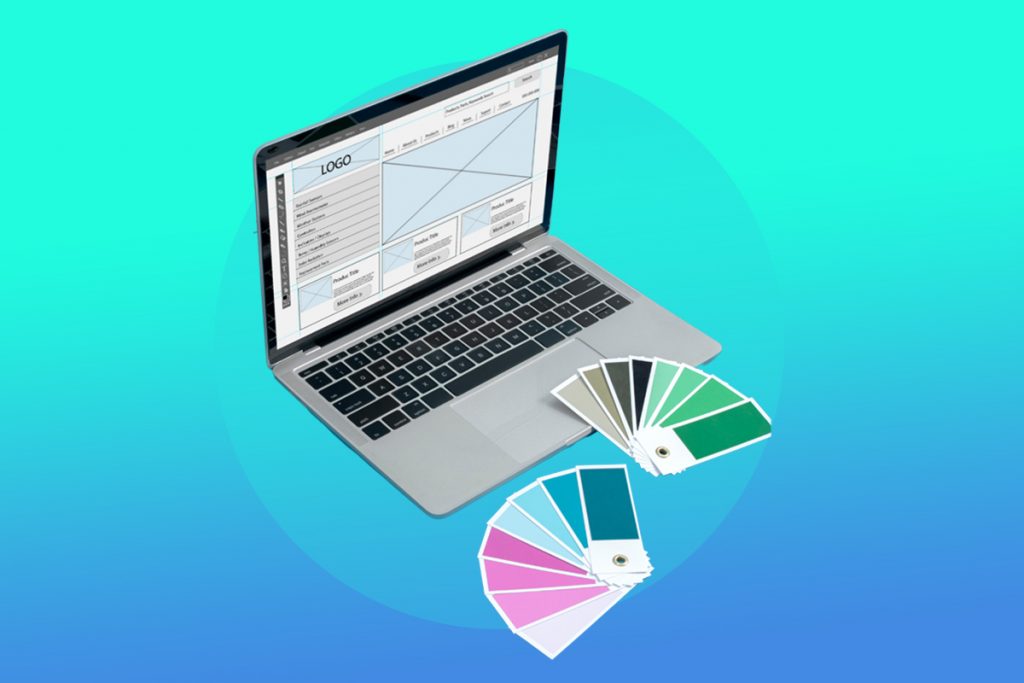
1. Saves You Time
Hiring freelancers can take days or even weeks. You have to find the right person, check their availability, and direct them at each step of the design project. You can save time by subscribing to an unlimited graphic design service. These services have already done the vetting, which helps you cut the time needed to hire a freelancer & get usable work from them. These services have teams of designers with different skillsets, so you can simply swap designers if you don’t like the direction your project is going in.
2. Saves You Money
Some of the highest rated design services offer packages or bundles to help you save money that would be going to branding, social media managers, or ad creators. The design subscription model lets you pick to plan that offers only what you need and request multiple designs for a flat monthly fee. Unlimited revisions are built into the plan. So you’ll never pay extra fees or wait weeks for a simple project to be completed.
3. You Partner with Reliable Pro Designers
Since graphic design services manage the hiring process, they ensure the designers working for them are reliable and highly trained. Some freelancers are new to the industry, lack follow-through, or simply don’t know how to navigate professional conversations. Graphic design services guarantee that you’ll communicate directly with mature designers who respond to your requests and understand your vision.
4. You Double Your Design Output
For some companies, like agencies, design output is critical. You need many different types of design projects completed by specific deadlines. You also need to manage multiple brands, which unlimited design teams are accustomed to helping agencies do.
With free trials and money-back guarantees, there’s no risk in trying out one or all of the highest rated design services. You may just be surprised by how much work it takes off your team’s plate.

7 Effective Ways to Improve at Networking and Grow Your Brand

Meta Sphere AI: New AI Knowledge Tool Based on Open Web Content

Prowly Review: Boost Your Media Relations with Ease

Fiverr vs Penji vs Canva: Who Comes Out on Top for Creatives?

5 Highest Rated Design Services Used by Big Brands & Agencies

Oppo Air Glass: A Ground-Breaking AR Technology Experiment?

Augmented Reality Contact Lenses: A Breakthrough in AR

Augmented Reality Contact Lenses: A Breakthrough in AR

Prowly Review: Boost Your Media Relations with Ease

5 Highest Rated Design Services Used by Big Brands & Agencies

10 Trusted Customer Feedback Tools Used by Many Businesses

What Is Cybersickness And How To Deal With It

Fiverr vs Penji vs Canva: Who Comes Out on Top for Creatives?



